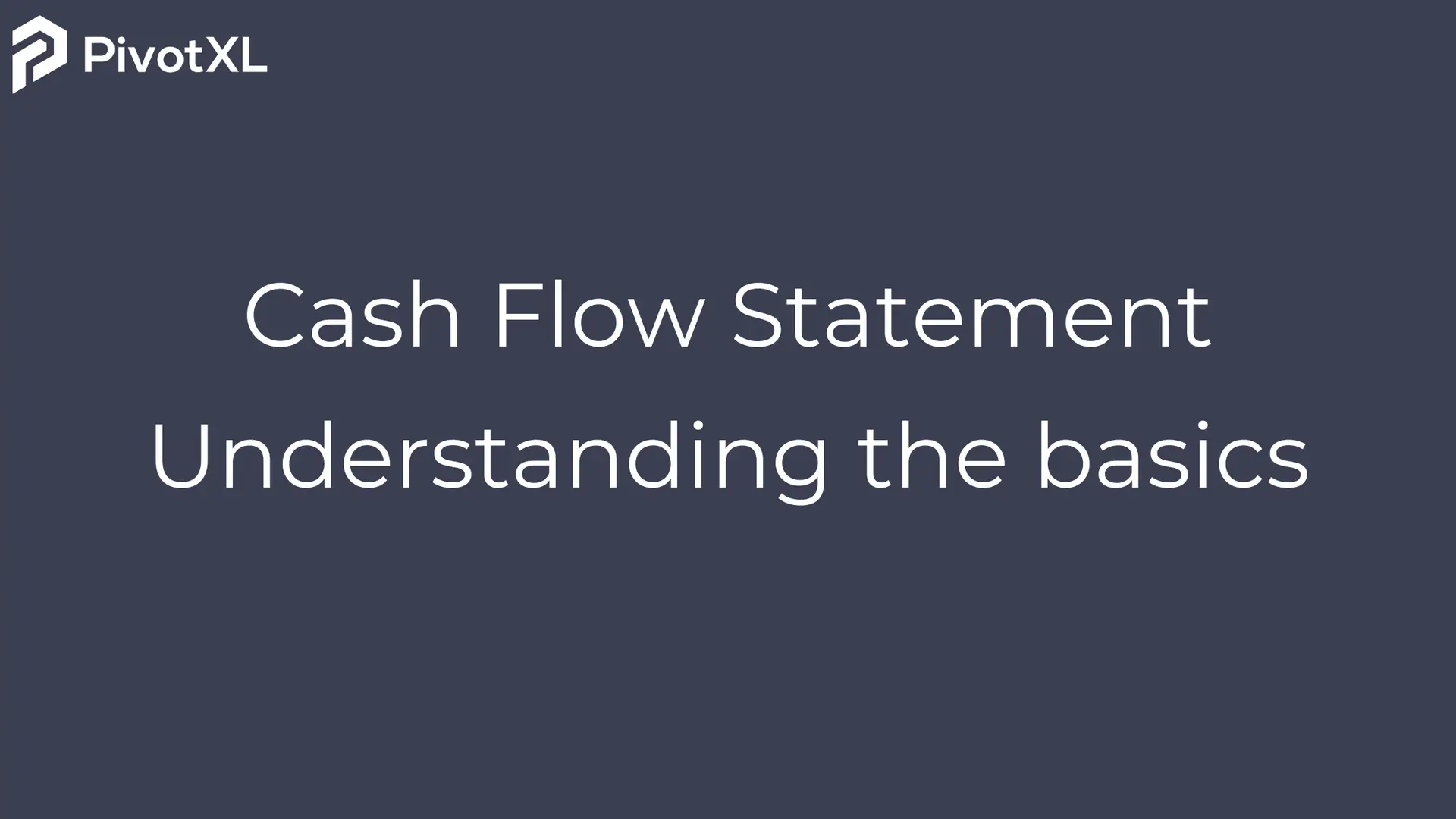A cash flow statement is one of the most critical financial statements for any business, providing insights into how cash is moving in and out of the organization. Whether you’re a small business owner or a financial analyst, understanding this document is crucial for evaluating a company’s liquidity, solvency, and overall financial health. In this post, we’ll dive into the components of a cash flow statement and discuss how tools like PivotXL can simplify the process.
What Is a Cash Flow Statement?
The cash flow statement is a financial report that provides detailed information about cash inflows and outflows over a specific period. Unlike the income statement, which includes non-cash items like depreciation, the cash flow statement focuses purely on actual cash movements.
The statement is divided into three main sections:
- Operating Activities:
- This section details cash generated or consumed through core business operations, such as revenues and expenses.
- Examples include cash received from customers and payments made to suppliers.
- Investing Activities:
- This area covers cash flows from the acquisition or sale of long-term assets like property, equipment, or investments.
- Example: Cash spent on purchasing new machinery or cash earned from selling a piece of equipment.
- Financing Activities:
- This section includes cash flows related to financing the business, such as issuing shares, borrowing, or repaying debt.
- Example: Proceeds from a loan or dividends paid to shareholders.
Why Is the Cash Flow Statement Important?
- Liquidity Management: It helps businesses ensure they have enough cash to meet obligations.
- Investment Decisions: Investors use this statement to gauge a company’s financial health and sustainability.
- Risk Assessment: Identifies potential cash shortages or surpluses.
- Transparency: Offers a clear view of how effectively a company manages its cash.
Common Challenges in Preparing a Cash Flow Statements
- Data Integration: Combining data from various sources can be time-consuming.
- Complex Calculations: Adjusting for non-cash transactions requires precision and attention to detail.
- Time Constraints: Preparing accurate statements quickly can be challenging, especially for large organizations.
How PivotXL Simplifies the Process
PivotXL is an advanced financial planning and analysis (FP&A) tool that revolutionizes the way businesses handle their cash flow statements. Here’s how it can help:
- Automated Data Integration: PivotXL seamlessly integrates with multiple data sources, ensuring that all relevant financial data is consolidated in one place.
- Real-Time Updates: The platform provides real-time updates, enabling businesses to track cash movements as they occur.
- Customizable Templates: With its pre-built templates, creating cash flow statements becomes a hassle-free task.
- Error Reduction: By automating calculations and adjustments, PivotXL minimizes the risk of errors, ensuring accuracy and compliance.
- Actionable Insights: The platform offers intuitive dashboards and analytics to help decision-makers interpret cash flow trends effectively.
Tips for Effective Cash Flow Management
- Monitor Regularly: Regularly review your cash flow statement to identify trends and make proactive decisions.
- Optimize Receivables and Payables: Ensure timely collection of receivables and manage payables strategically to maintain healthy cash flow.
- Use Technology: Leverage tools like PivotXL to streamline processes and improve accuracy.
- Plan for Contingencies: Always maintain a buffer to handle unexpected expenses or downturns.
Conclusion
Mastering the cash flow statement is essential for maintaining financial stability and making informed business decisions. By understanding its components and leveraging advanced tools like PivotXL, businesses can streamline the process, reduce errors, and gain valuable insights into their financial performance. Start managing your cash flow effectively today to ensure a prosperous tomorrow!




